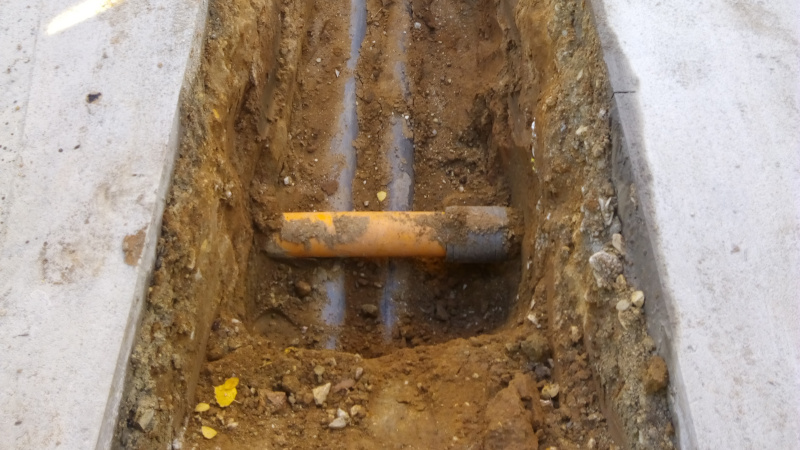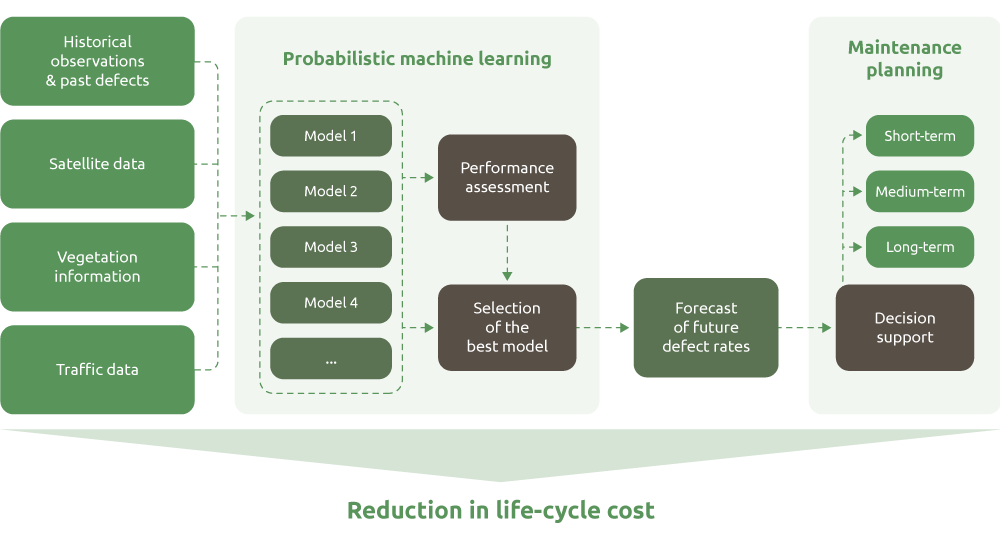
For maintenance in gas distribution networks, the critical pipes that should be inspected or replaced have to be identified. Selecting the critical pipes based on reliability or risk based procedures is highly suitable to minimize life-cycle cost. However, assessing and quantifying the reliability and the associated risk of components in natural gas distribution networks is challenging due to incomplete knowledge about the state of the component and the characteristics of the component's proximity. For example, most pipes in gas distribution networks are buried underground and the present state of the pipe as well as the properties of the surrounding soil are uncertain.
In order to reduce the uncertainty in such a stochastic model, historical data on the gas distribution network and on external factors that influence the state of the network components is essential. Nowadays, such data is already collected by many utilities. Additionally, geospatial data on soil types, location-specific data on weather/climate conditions and data on traffic intensity can be readily acquired from geographic information systems for the coordinates of interest.

We developed a data-driven approach that uses all available information to forecast the defect rate of pipes in the gas distribution network. The forecasted defect rate can be used to select the most critical pipes for maintenance planning. The forecasted defect rate can also be used to set the maintenance budget adequately to fall below a desired threshold defect rate. Moreover, the forecasted defect rate helps to optimally assign the future maintenance budget to different network districts.
+49 (0)89 21709083
